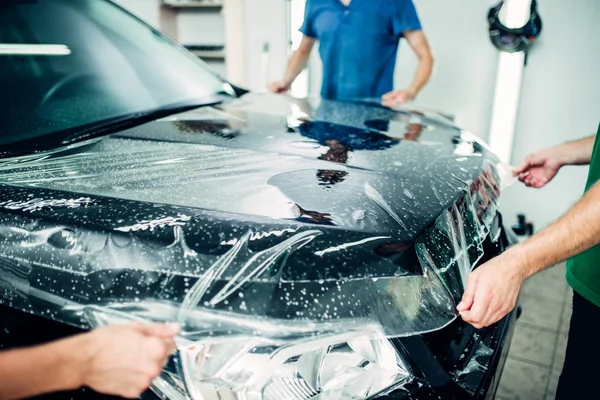
In the world of automotive preservation, Paint Protection Film (PPF) stands as a formidable shield, safeguarding vehicles against the harsh elements of the road. From gravel to bird droppings, PPF offers unparalleled protection, preserving the luster and integrity of your vehicle’s paint for years to come. This comprehensive guide explores the intricacies of PPF, covering everything from its thickness and hydrophobic properties to brands, advantages, and maintenance.
Thickness
PPF thickness is a crucial factor in determining its effectiveness. Typically measured in mils (one thousandth of an inch), PPF comes in various thicknesses ranging from 6 to 10 mils. Thicker films offer superior protection against impacts and abrasions, but may be less pliable during installation.
Hydrophobic Properties
Modern PPF formulations incorporate hydrophobic additives, which repel water and enhance the film’s self-cleaning capabilities. This not only keeps your vehicle looking pristine but also makes maintenance a breeze, as water and contaminants slide off the surface with ease.
Warranties
Leading PPF brands such as Xpel, 3M, STEK, Avery, and Hexis offer warranties ranging from 5 to 10 years, providing peace of mind to consumers. These warranties typically cover yellowing, cracking, peeling, and other forms of deterioration under normal usage conditions.
Pattern Cut vs. Bulk Install
PPF can be installed using two methods: pattern cut or bulk. Pattern cut involves pre-cutting the film to match the specific contours of each vehicle model, ensuring a precise fit. Bulk installation, on the other hand, involves applying a large sheet of PPF and trimming it to size during the installation process. While pattern cut offers superior fitment, bulk installation may be more cost-effective for custom applications.
Brands
Several reputable brands dominate the PPF market, each offering unique formulations and features. Xpel is renowned for its self-healing properties, while 3M is praised for its clarity and durability. STEK, Avery, and Hexis also offer high-quality PPF solutions, catering to diverse consumer preferences.
Advantages and Disadvantages
The advantages of PPF are manifold. It provides unparalleled protection against rock chips, scratches, and UV damage, preserving the resale value of your vehicle. Moreover, PPF is nearly invisible when properly installed, maintaining the aesthetic appeal of your vehicle. However, PPF can be costly, and improper installation may result in visible seams or bubbles, detracting from the vehicle’s appearance.
UV Protection
PPF acts as a barrier against harmful UV rays, preventing paint fading and discoloration over time. This UV protection not only preserves the aesthetic appeal of your vehicle but also extends the lifespan of its paint finish.
Cost
The cost of PPF installation varies depending on factors such as the size of the vehicle, the type of PPF used, and the complexity of the installation. On average, PPF installation for a standard-sized vehicle ranges from $1,500 to $3,000.
Coverage Areas
PPF can be applied to various areas of the vehicle, including the hood, fenders, doors, mirrors, and bumper. Some consumers opt for full-body coverage for maximum protection, while others focus on high-impact areas prone to damage.
Self-Healing Properties
Certain PPF formulations feature self-healing properties, which allow minor scratches and swirl marks to disappear with time or exposure to heat. This innovative technology ensures that your vehicle’s paint remains flawless, even in the face of daily wear and tear.
Maintaining PPF
Maintaining PPF is relatively straightforward. Regular washing with a mild detergent and water, followed by gentle drying with a microfiber cloth, helps preserve its clarity and hydrophobic properties. Avoid abrasive cleaners or high-pressure washers, as these may damage the film.
Removing PPF
When the time comes to remove PPF, it can be peeled off manually or with the assistance of heat. Professional removal services are recommended to minimize the risk of paint damage and ensure a clean finish.
Paint Protection Film represents the pinnacle of automotive protection, offering unmatched durability, clarity, and peace of mind. Whether safeguarding against rock chips on the highway or preserving the showroom shine of a new vehicle, PPF stands as a testament to the ingenuity of modern automotive technology. With its array of benefits and advancements, PPF continues to redefine the standards of automotive preservation, ensuring that your vehicle remains a timeless symbol of beauty and excellence.

Recent Comments